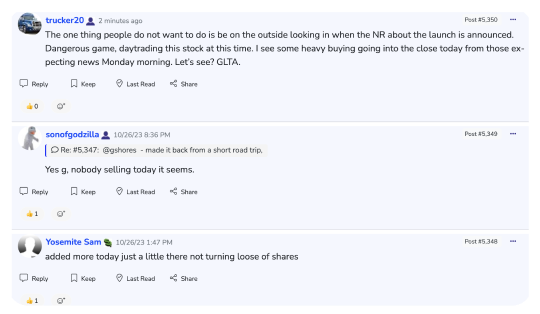Wednesday, August 03, 2022 9:29:20 AM
When the date is set, then the company must file with FINRA within 10 days of the action.
What is a Reverse Stock Split? Securities Lawyer 101
Sharing is caring!
Reverse Stock Split
Securities Lawyer 101 Blog
Reverse stock splits are often used by public companies to reduce the amount of securities outstanding. A reverse stock split can also be used by private companies in corporate restructurings. Typically in a reverse split, a company reduces the number of its outstanding shares in proportion to the ratio of the reverse stock split so that each stockholder the same percentage of the company’s outstanding shares immediately prior to and after the reverse split. If approved and effected, the reverse stock split will be realized simultaneously and in the same ratio for all of the company’s common stock. The reverse stock split will affect all holders of the company’s common stock uniformly and will not affect any stockholder’s percentage ownership interest in the company.
Why do companies do reverse stock splits?
Companies do reverse stock splits for a variety of reasons. Reverse Splits are frequently used in reverse merger transactions particularly where illegal custodianship or receivership actions are used. Upon taking control of a shell, corporate hijackers enact large reverse stock splits to eliminate the interests of legitimate shareholders and investors.
Despite the use by shell hijackers and reverse merger purveyors, there are legitimate reasons that companies effect stock splits. These include that a reverse stock split might:
? make the company more appealing to investors because the company will have fewer shares outstanding and may have a higher stock price;
? improve the trading price of its common stock; and
? allow the company to issue more shares in the future because there are fewer shares outstanding.
How does a reverse stock split affect a stock’s share price?
A reverse split reduces the number of a company’s shares outstanding and increases its share price proportionately. For example, if a shareholder owns 1,000 shares of a company’s stock and it declares a one for ten reverse split (1:10), the shareholder will own a total of 100 shares after the split.
Are the company’s existing shares outstanding diluted when a company enacts a reverse stock split?
Unlike an issuance of new shares, a stock split does not dilute the ownership interests of existing shareholders. If a company does not reduce its authorized shares in proportion to a reverse split–and it can elect not to do so–the company will be able to issue more shares in the future which will dilute the existing shares that were reduced as a result of the reverse stock split.
Do reverse stock splits affect the value of what shareholders own?
A reverse stock split has no effect on the value of what shareholders own.
What is required should an issuer choose to do a reverse stock split?
Generally, a public company can declare a reverse split if it obtains the approval of its board of directors. Most often shareholder approval is not required.
What law governs reverse stock splits?
State corporate law and a company’s articles of incorporation and by-laws govern reverse stock splits.
How do companies notify their shareholders of a reverse stock split?
Companies may issue press releases notifying the public of a reverse split. If a company is required to file reports with the SEC, it may notify its shareholders of a reverse stock split on Forms 8-K, 10-Q and 10-K. A non-reporting company is required to notify the public through its current report filings on the OTCMarkets website.
In addition, all OTC issuers, reporting and non-reporting, that wish to do a reverse (or forward) stock split must comply with FINRA’s Rule 6490. Generally, a company must notify FINRA of its intentions at least ten (10) days prior to the desired effective date. A Corporate Action form must be filled out, and a processing fee will be charged. Normally, the issuer’s transfer agent takes care of the paperwork. Click here for a fuller explanation.
Once the request is processed, FINRA will set an ex-dividend date, and the split will be noticed on the Daily List. Issuers should avoid premature announcement of the split’s effective date; that date is only certain when the processing is complete and the dividend notice appears on the Daily List.
https://www.securitieslawyer101.com/2015/reverse-stock-split/#:~:text=How%20do%20companies%20notify%20their,%2DQ%20and%2010%2DK.
It is understood that all posts on the site are to be considered opinions. They do not need to indicate this in their posts.
Readers determine the veracity of the posts they read and the credibility of other Users
VPR Brands LP Reports Record Annual Financial Performance for Fiscal Year 2023 • VPRB • Apr 19, 2024 11:24 AM
Coinllectibles' Subsidiary, Grand Town Development Limited, Acquires Rare Song Dynasty Ceramics Worth Over USD28million • COSG • Apr 18, 2024 8:03 AM
ILUS Provides Form 10-K Filing Update • ILUS • Apr 17, 2024 9:54 AM
Glucotrack Announces Expansion of Its Continuous Glucose Monitoring Technology to Epidural Glucose Monitoring • GCTK • Apr 17, 2024 8:00 AM
Maybacks Global Entertainment To Fire Up 24 New Stations in Louisiana • AHRO • Apr 16, 2024 1:30 PM
Cannabix Technologies Begins Certification of Contactless Alcohol Breathalyzer, Re-Brands product series to Breath Logix • BLOZF • Apr 16, 2024 8:52 AM










